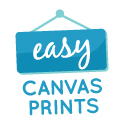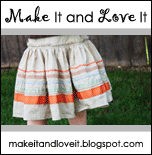My recent assignment from Studio 5 to learn about paper marbling very quickly became an obsession - I read dozens of online tutorials and tried a whole bunch of different techniques, made myself more than a little bit crazy, and finally hit on the method that combined great results, affordability, and ease of execution. It takes a little prep work, but the finished result is so much fun. Here's my segment on Studio 5 and a written tutorial to help you get started:
What you need to get started:
Alum - the best price I found was on Amazon Prime
Absorbent paper - my favorite was the inexpensive Canson watercolor paper pad from Walmart (way easier to work with than more expensive options I tried, but captured the colors and patterns beautifully) -or- Fabric (something lightweight and porous works very well, like muslin or cotton)
Acrylic Paints
Oxgall - I bought mine at Hobby Lobby, but it's also available on Amazon Prime
Liquid Starch - I bought mine at Walmart for $2.97 for a half-gallon bottle.
Other supplies you'll probably have on hand: Small plastic tubs, syringe, wood skewers, paint brush or spray bottle, jelly roll pan (or other flat tray or bin, depending on the size of your surface)
Prep Work:
1. Treat paper or fabric with alum. The alum coating on whatever surface you plan to marble is
super important - that's what grabs on to the paints so they don't wash away. Mix one tablespoon of alum per cup of warm water, then stir until dissolved. Use a brush or a spray bottle to thoroughly coat paper, then let dry. If you're using fabric, soak it in the alum water for at least half an hour, then thoroughly wring out and let dry (do not rinse).
2. When surface is dry, iron with a hot iron (no steam) to remove all wrinkles.
3. Mix paints. The solution I had the best success with was about 1 T paint, 1 T water, and 1/4 t oxgall. The oxgall helps the paint spread out on the surface of the starch. Different colors of paint will react differently, so you may need to tweak this for the colors you're using. You can also use oil paints thinned with mineral spirits - these create really rich colors, but I found the acrylic paints were overall much easier to work with.
4. Prepare marbling surface. You need a thickened-water base to float your paints on top of; this is called "size." I tried a couple of different cheaper alternatives - gelatin, liquid starch, etc. - but couldn't quite get the consistency right to be able to float the paints. A lot of online tutorials recommend using methyl cellulose as your size, but it's pretty pricy ($18/lb on Amazon was the best price I found). I finally gave up on my cheaper alternatives and ordered it, but when I mixed it up I was amazed to find it was almost the exact consistency of the liquid starch. So I went back to the drawing board a little bit, and found that once I got the right consistency of paint, I actually liked the liquid starch better as a size than the methyl cellulose. Now, that 1 lb of methyl cellulose would go a long, long way, and in the long run it might be as cheap or cheaper than buying bottles of liquid starch. But if you're just starting out with marbling and you want to give it a try before investing in the more expensive supplies, liquid starch is a really good way to go. All you need to do is pour the liquid starch straight from the bottle into your tray, and you're good to go. If you're using methyl cellulose, I recommend this tutorial from A Beautiful Mess for getting it ready to go.
Now for the fun, creative part!
1. Add paints to size. Get creative laying your paint down. Experiment with different amounts and tools. A dropper or syringe is great for larger areas, and a wooden skewer works well for smaller details.
2. Get swirly. If desired, use your wooden skewer to gently swirl the paints. Less is more - if you stir them too much, your colors will get muddy and you'll lose all the detail in your finished piece. There are lots of amazing tutorials and YouTube videos out there if you want suggestions about creating particular patterns.
3. Gently lay your paper on top of your paints. Make sure every part of the paper comes in contact with the surface of the size. I found that gently running my finger over the paper after laying it down helped eliminate any air pockets. Let your paper sit for a few seconds.
4. Rinse off excess paint and size. Pull your paper out of the size and spray it gently under running water to remove all the excess paint and size. Because you've treated it with alum, the print you've created won't wash off the paper.
5. Let dry, then iron again.
6. Show off your creation!
 |
| A few pieces displayed on Studio 5 |
This was such a fun project once I got the hang of it. I loved experimenting with different colors and patterns, and I felt very artistic. I especially loved trying it on fabric - my favorite project was a pair of throw pillows I made for my living room:
Now, as a disclaimer - paper marbling is a centuries-old art form, and volumes have been written on the proper techniques. A quick search online reveals amazing artists doing such beautiful and intricate work. My little tutorial is just a starting place, and a way to dip your toes into these very colorful waters. Enjoy!
PS I didn't get a chance to mention this on the show, but if you just want to play around with the process and let your kids get involved and have a blast, check out this Suminigashi Ink kit from Amazon - $13 for the whole thing, and no special prep needed. My kids LOVED playing with it.



.JPG)
.JPG)
.JPG)
.JPG)
.JPG)
.JPG)
.JPG)
.JPG)
.JPG)
.JPG)
.JPG)
.JPG)
.JPG)
.JPG)

.JPG)








